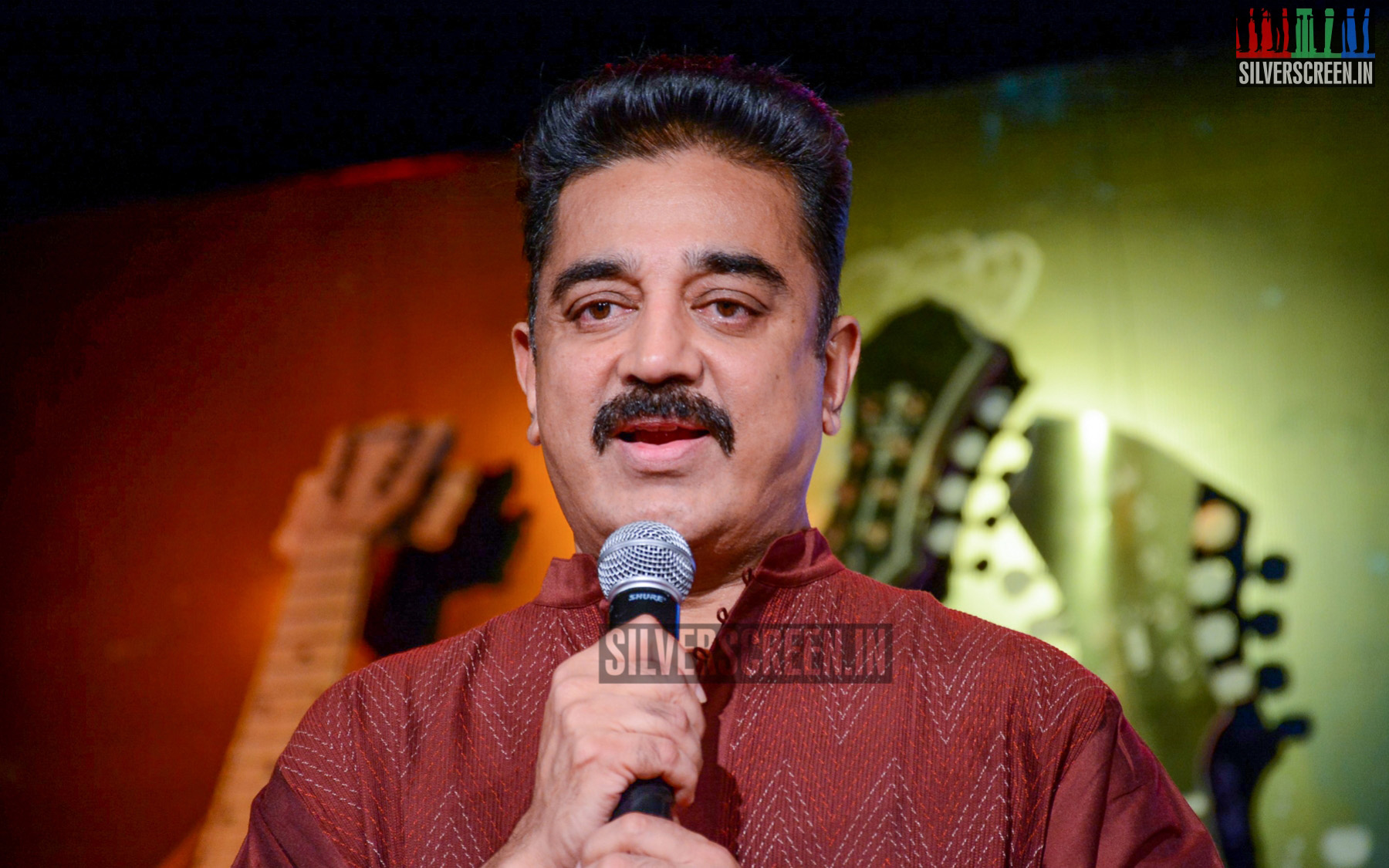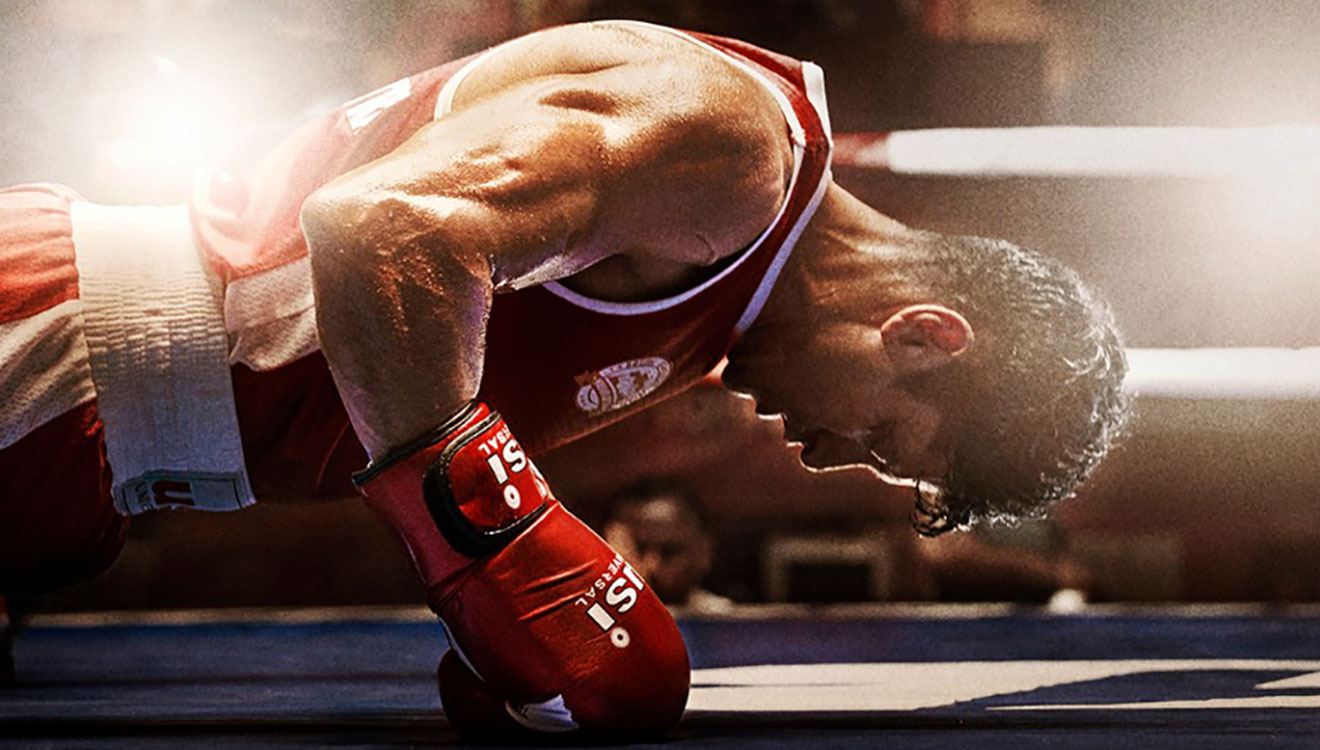(Spoiler alert)
Kuthiraivaal seems to have baffled all the reviewers who have had the chance to watch it. The film, which has done its victory lap in festival circuits around the world, has journalists defining it as a fascinating attempt to put psychoanalytic theory on film or as one which simply cannot be slotted.
It is likely to leave you, the viewer, with a quizzical expression on your face when you watch it on March 18 in theatres near you.
Simply put, the film starts off with a bizarre dream of a man who meets a beautiful horse without a tail. He wakes up the following day with the horse’s tail attached to his body and attempts to understand how to get rid of it. But there are no ‘simply puts’ in Kuthiraivaal.
This film tears through Western philosophers like Freud, references writer Franz Kafka, emulates painter Vincent Van Gogh and attempts to provide perspective into Jacques Lacan’s work. It talks about the politics that surrounds the origins of Neeli, a siru deivam, a village deity, sympathises with death and suicide while also commenting on the socio-cultural impact of Tamil Nadu’s late Chief Minister M.G. Ramachandran. This summary however barely scratches the surface of what the film offers. Through stunning visuals, a crystal clear background score and haunting music, Kuthiraivaal is a treat to watch as it leaves both you and me with much to take away.
The team that has made Kuthiraivaal including writer G. Rajesh and directors Shyam Sunder and Manoj Leonel Jahson are convinced that no two responses to the movie will be the same.
While sitting down to discuss the effort that went into making this collaborative film, its technical crew also talks to Silverscreen India, including Associate Director and Lyricist Sathish Raja Dharmar, Editor Giridaran MKP and Assistant Director Aravindhan MC. They laugh as they say that this is likely to be among their production banner Yaazhi Film’s most commercial releases.
“The thought which has gone into the making of the film is now only half as intense as its initial drafts. Imagine 12 people coming together to break down a script that Rajesh had written- drawing each frame when discussing shot divisions and eventually engaging in conversation about what we can finally use in the film. It was a long collaborative effort starting 2015,” says Sathish.
Most people in the core team that shot the film including the writer and the two directors have known each other for nearly 10 years. While Shyam and Manoj studied at LV Prasad Film and TV Academy (LVP) around the same time, others including Rajesh and Sathish have all come together in the past for films that are yet to take off. The cinematographer Karthik and editor Giridaran were also peers from LVP. When Kuthiraivaal was conceptualised, discussed and written, it was initially supposed to be a small-budget film, says Shyam. No compromises, however, were made while incorporating stunning visuals and art decor.

The film made its way to director Pa Ranjith, who runs Neelam Production, through the help of kind friends who offered to talk the film up to the director-producer, says Rajesh.
Though the film has taken nearly seven years to come together, it was shot in 34 days with actors Kalaiarasan (Saravanan, Freud) and Anjali Patil (Van Gogh, Irusaayi) in the lead. Every single person in their 100 odd person cast and crew knew the plot of the film, says Sathish. “The crew members, many of whom have worked in traditional cinema sets for years, began contributing to the process. The portions which were shot near writer Rajesh’s village in Kallakurichi, had the residents act in the film and also create sets with us. Such collaboration was necessary for this film. It was the only way through which we could shoot such a movie,” he says.
The team hopes to continue creating eclectic worlds with moons in motion, crazy mathematics professors and a land that shows both day and night like the one in Kuthiraivaal. Director Manoj says that the production house Yaazhi Films, run by Vignesh Sundaresan and him, is likely to have three other projects out this year. Two of them include Bommai Nayagi and Natchathiram Nagargirathu.
“We are looking to venture in the documentary space by making videos of artists who performed at Margazhiyil Makkal Isai run by Pa Ranjith’s Neelam Culture. In doing so, we want to eventually function as an independent music label and make sure these artists who we are doing a documentary on get on spotify. We are also researching the process of venturing into the world of virtual reality,” he says.
Before moving on to shoot for other projects, the team sits down and decodes prominent symbols that writer G. Rajesh employs in the film, to ensure audiences gets their answer to the question, “What the hell is happening?”
Horsetail

Rajesh offers two explanations for this symbol. He says that for years, naughty children have been called vaalu (tail) in Tamil. “I have often wondered why, especially because we lost this tail so many years ago,” he says. He adds that he has had a fascination with lizard tails for years. “If they ever get into an accident where they are attacked, they are able to regenerate their tails and continue living full lives. I am convinced that if humans end up finding their tails and the reason behind the existense of their tails, they can possibly figure out immortality,” he says.
Horse without a tail

Rajesh says that the symbol of the horse was an important motivation while writing the film. He says that Wendy Doniger’s book, The Hindus: An Alternative History talks about how the history of horses is the history of India’s colonisers.
“When colonisers first rode horses to lands which had never seen horses, it seemed like those riding the horses were half-men and half-horses like the centaurs which Borges describes in his Book of Imaginary Beings. Indigenous people from places like Panama, Peru and Argentina had several myths regarding doomsday and would often speak of such parables where people would arrive on the backs of beasts to kill them. They did not know that horses could be tamed. The reason why colonisers won was because indigenous people became scared of the power that those riding horses wielded. The concept of colonialism is hence based on horses,” he says.
He adds that he found it pretty astounding when energy and speed were both measured through horsepower.
Rajesh said that just as Kafka had written Metamorphosis through the lens of a cockroach, he too chose to do so through a horse. “I thought Kafka never explained why the man had turned into a cockroach. I thought I could do that better in my work,” he says.
Hybrid
Kuthiraivaal is a rearrangement of Ovid’s Metamorphoses, says Rajesh. The book references the concept of hybrids through both the centaur which is a half man- half horse and the minotaur which is half ox and half man. “In our film, there are several characters who long to fly just like Icarus who features in Metamorphoses. It is a reference, a homage to Ovid’s work,” Rajesh says.
Screensaver
According to Rajesh, the constant colours that appear much like a screensaver over protagonist Saravanan’s head denotes the concept of a labyrinth that he is unable to escape from. Just like the story of Icarus with wax wings, he too must fly.
Ball

The ball is merely an absurdity according to Rajesh. Centuries ago, before humans moved to becoming pastoral from hunter-gatherers, they had to fight and play for their food and survival. As they moved towards becoming pastoral, they lost this need to play, says Rajesh. Saravanan-Freud plays with his ball through the film in a bid to reconnect to a time when it was once okay to play. Society however, does not accept it.
Freud
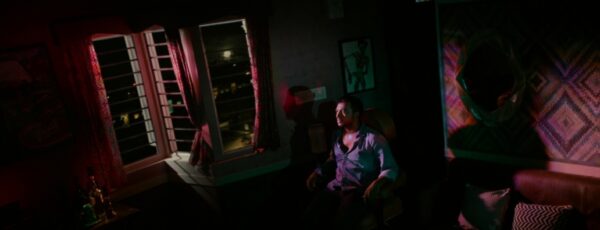
Rajesh says that he wrote this film to trash Freud and his philosophy which makes artists like him seem like those with diseases. This book titled The Assault on Truth: Freud’s Suppression of the Seduction Theory is a book by the former psychoanalyst Jeffrey Moussaieff Masson challenges Freud in ways unimaginable, he says.
“According to Freud, artists like me are diseased too. Anyone who imagines an Alice In Wonderland kind of world requires help. Creativity hence becomes a disease. Freud also places all dreams in the world of sex and makes it seem immoral. He thinks of it as an illness which can be cured. I wanted to question him and thought that the film would be a good way to do it,” he says.
Neeli
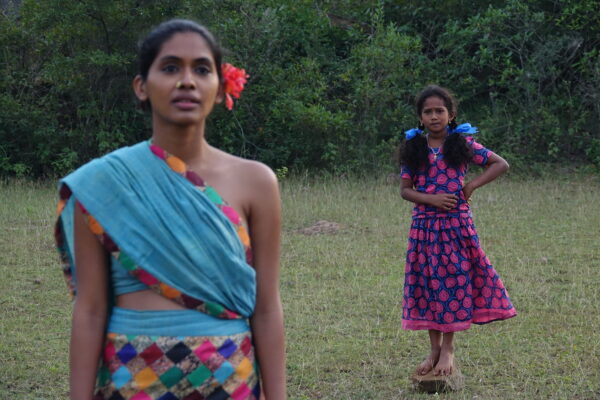
Neeli is a village deity whose origins have been placed in primitive societies which initially worshipped women. Associate director Sathish says that the myths surrounding Neeli are plenty. Any scorned woman who ends up seeming like a ghost has been called Neeli, he says. The inspiration for the Neeli in Kuthiraivaal is the myth of Pazhaiyanoor Neeli, says Rajesh. He says that Neeli yearns to fly but is constantly embroiled in this war between religions like Hinduism, Jainism and Buddhism that attempt to claim her as their own.
MGR
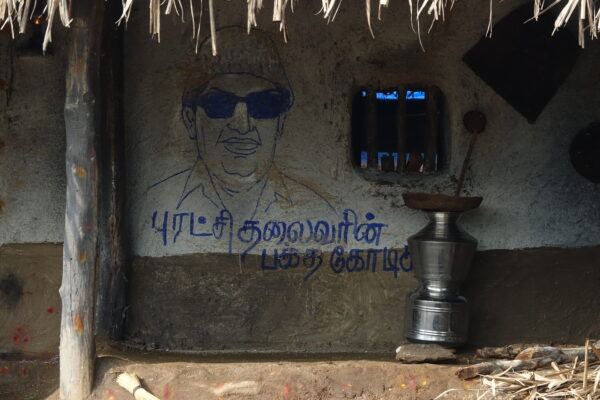
MGR is an important symbol entrenched in the social fabric of the society, says director Shyam Sundar. “He is a tamil pop culture icon. One cannot portray the history of Tamil Nadu without his presence. When we speak about grand narratives, we think of how Freud, for instance, is a big deal in the world of psychology. MGR is similar. Whether right or wrong, a grand narrative exists. It is not a criticism but a mere commentary on his presence,” he says.
Rajesh also adds that there is an overarching identity of MGR that makes him the only ‘good guy’ in Tamil cinema and actor Nambiyar the only ‘bad guy’. “In this world, several bad men exist. There is a trope that the world is saved by these good guys. In this film, each good guy becomes MGR,” he says.
Maths teacher Stuart Koteeswaran
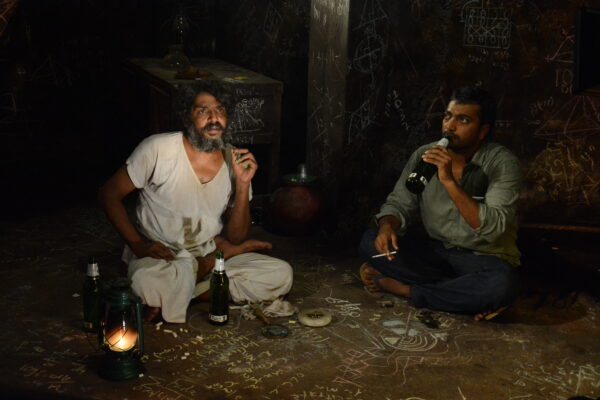
“The reason why I included this was because I do not understand mathematics. It was only when I was 25 or something that I realised that numbers do not have a beginning or an end. Shyam said that he knew it long ago and fought to remove the dialogue but it was new information for me,” says Rajesh.
Giridaran says that the maths professor comes closest to figuring out the plot of the film. He is the one who points him towards the idea of having a lost childhood love.
The man with the dog

Rajesh says that the book Strangers by Albert Camus has a character who often carries a dog around. “I felt like he did not do a good job of writing the character so I decided to employ him differently,” he says while joking.
There is a political reason for naming the dog ‘Frog’, he says. The wiping out of green frogs from our landscapes can be linked to the introduction of liberalisation, he says. “Frogs can thrive only in clean water. They help rid our surroundings of mosquitoes. With thriving industries polluting water sources, frogs seem to have vanished. Around the same time, forign breeds of dogs have made their way into our houses,” he says.
Recommended
Vivaldi’s Four Seasons
The reason why Four Season loops is because music is strongly connected to memory, says Rajesh. Different instruments connect to different parts of the body. Music helps Sarvanan to connect to his own memory which he seems to have lost, he adds. “I have a theory which basically talks about how remembrance is linked to the consistent thought of death. Memory loss on the other hand is forgetting the fact that death exists. The tussle consistently exists between the two,” he says.
“I wanted to include jazz elements in the film but we did not have the budget. I had been listening to Four Seasons around the same time so I figured that I will add that instead,” he says while laughing.
Van Gogh

“I don’t like death but like the idea of suicide. I have a bit of an interest in the lives of artists who kill themselves- almost a craze. Hence, I really enjoy Van Gogh. The colours he uses- predominantly primary- are stunning too,” says Rajesh. In the book Order of Chaos, they thought of Van Gogh as a woman. He adds that this is an inspiration too.
Naming the character Van Gogh is also a homage to Periyar, he says. “Periyar is someone who would name people based on the places he has last visited. I thought I could do the same with Irisayi who is also a rainbow and eventually, Van Gogh. I thought it might be a nice way to take the name to the masses. Just like a Vanimathi, there might one day be a Van Gogh,” he says.
Hummingbird
The Hummingbird is a reference to a poem by Yuvan Chandrasekar. “It keeps reminding the character of wanting to fly. He eventually flies like a bird,” he says.
Well
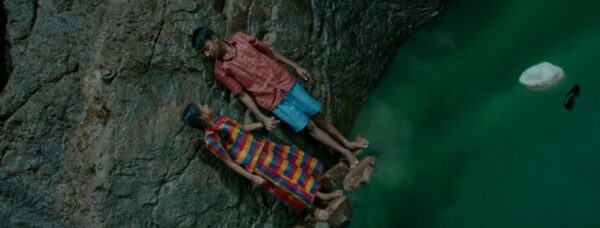
“When I was young and studying in a hostel, the nuns there could not believe me when I said that I had a dream. According to them, young children do not dream. I remember dreaming of a circle- like a well. That image stayed for many years,” says Rajesh.
Wells also reminds Rajesh of how people in his village would often jump into wells and die. “I always thought that they wanted to become one with their reflection,” he says.
Old woman

“For years, paatis (old women) have been the symbol of stories in India. In many grand tales, a consistent character who has seen the entire tale unfold will tell the story. Gerontion is the term. That is what I have aimed to use here. Avvair, the popular storybook character is the paati in this film,” says Rajesh.
Referential mania
Rajesh refers to the short story Signs and Symbols by Vladimir Nabokov while speaking about this fictitious illness called Referential Mania. “In this fictitious disease, people speak of flying. I hence decided to use this trope. Jacques Lacan also speaks about the mirror effect in his work where it seems that babies feel the need to conquer their reflection or doppelgangers in order to survive. There are so many doppelgangers in the film. The man with the dog and the protagonist as well as Irusayi and Van Gogh. The sequence where Irusaayi kills her reflection refers to what happens at the very end of the film,” he says.


